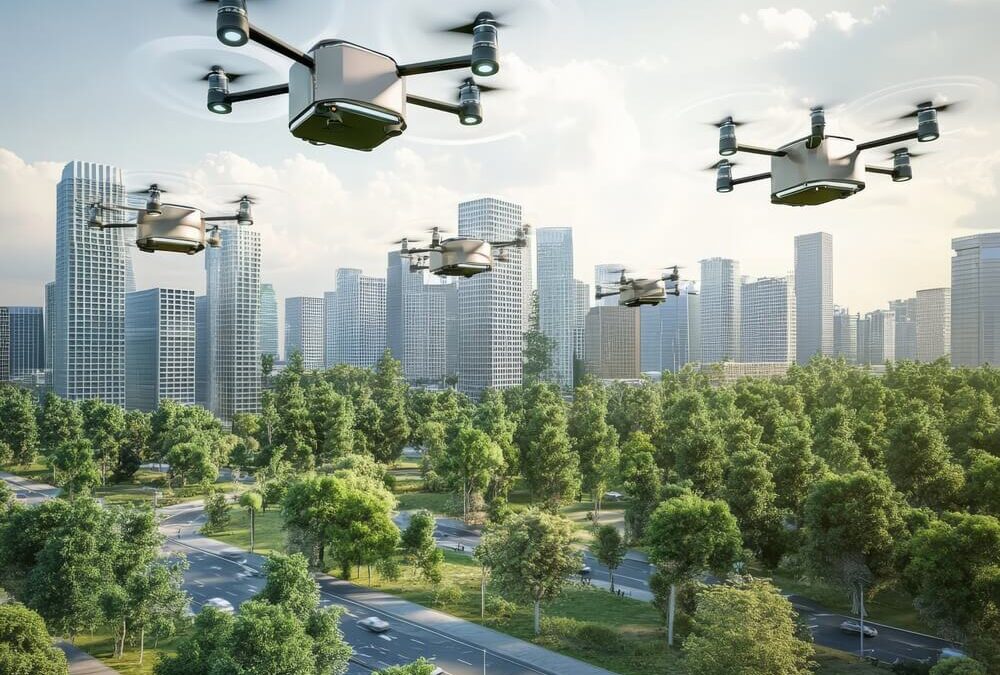Understanding the Threat of Unauthorized UAVs
Protecting power plants and airports from drones has become a growing concern as UAVs have become more accessible and advanced, posing risks to important infrastructure. The threat of unauthorized unmanned aerial vehicles is not just hypothetical; it is a tangible risk that demands immediate attention and action. These drones, when in the wrong hands, have the potential to disrupt operations, gather sensitive information, or even carry out criminal acts that can compromise the safety and functionality of critical networks. The rising threat requires an urgent UAV impact assessment to assess their security risks.
The unauthorized UAVs can fly into restricted airspace, potentially causing collisions with manned aircraft or disrupting sensitive equipment. At airports, for instance, drones can pose a significant threat to aviation safety, leading to costly delays and, in some cases, forcing airport shutdowns. Similarly, at power plants, the presence of drones can result in unauthorized surveillance or, in the worst-case scenario, damage to important components necessary for the production and distribution of power. The increasing threats to critical infrastructure highlight the urgent need for policymakers, security experts, and stakeholders to develop and implement effective anti-drone solutions for airports.
Protecting Power Plants from Drones: Strategies and Technologies
Protecting power plants from drones is necessary to prevent disruptions and unauthorized surveillance. This advanced anti-drone solutions for airports can identify and track drone activity within a defined perimeter, by integrating radar, radio frequency sensors, and optical systems. They provide a complete approach to monitoring airspace around power plants. Beyond detection, developing a capable response protocol is important too. This includes deploying countermeasures such as drone jamming technologies, which can neutralize potential threats by disrupting communication between the UAV and its operator.
Forming strategic partnerships with local law enforcement establishes collaborative efforts in addressing and investigating drone incidents. Incorporating these strategies into the security framework of protecting power plants not only improves their protective measures but also strengthens the resilience of our energy infrastructure. As the threat landscape evolves, staying ahead with innovative technologies and proactive response plans is important in safeguarding these critical facilities from the dangers posed by unauthorized UAVs.
Anti-drone Solutions for Airports: Securing the Skies
Anti-drone solutions for airports are important for the safety and integrity of airspace. These solutions combine advanced technologies like radar, optical sensors, and radio frequency detection to detect, track, and mitigate risks from unauthorized drones. A well-integrated surveillance system provides real-time alerts to security teams, improving situational awareness. By using multiple detection methods, these systems increase accuracy and minimize false alarms, which is particularly important in busy airport environments.
Jamming technologies can disrupt the communication link between a UAV and its operator, rendering the drone inoperative. This capability is primarily important in preventing drones from entering restricted airspace or interfering with aircraft operations. In addition, establishing cooperation with aviation authorities and local law enforcement can improve response protocols, securing an integrated approach to managing drone incidents. As drone technology evolves, airports must stay proactive by adopting innovative anti-drone solutions for airports to deal with emerging challenges.
The Future of UAV Defense in Critical Infrastructure
Integrating artificial intelligence and machine learning into anti-drone solutions for airports allows real-time data analysis, improving UAV detection accuracy. These technologies help predict potential drone threats and differentiate between harmless and hostile activity, reducing false alarms and improving response accuracy. Autonomous defense systems are a major advancement in protecting power plants from drones and airports.
These systems can independently detect, track, and neutralize unauthorized UAVs with minimal human input. Emerging technologies, like AI-driven drone swarms, can intercept rogue UAVs, acting as a flexible barrier. As drone technology advances, anti-drone solutions for airports and power plants must progress, using innovative tech and collaboration between developers, security agencies, and policymakers to safeguard critical infrastructure.


Recent Comments